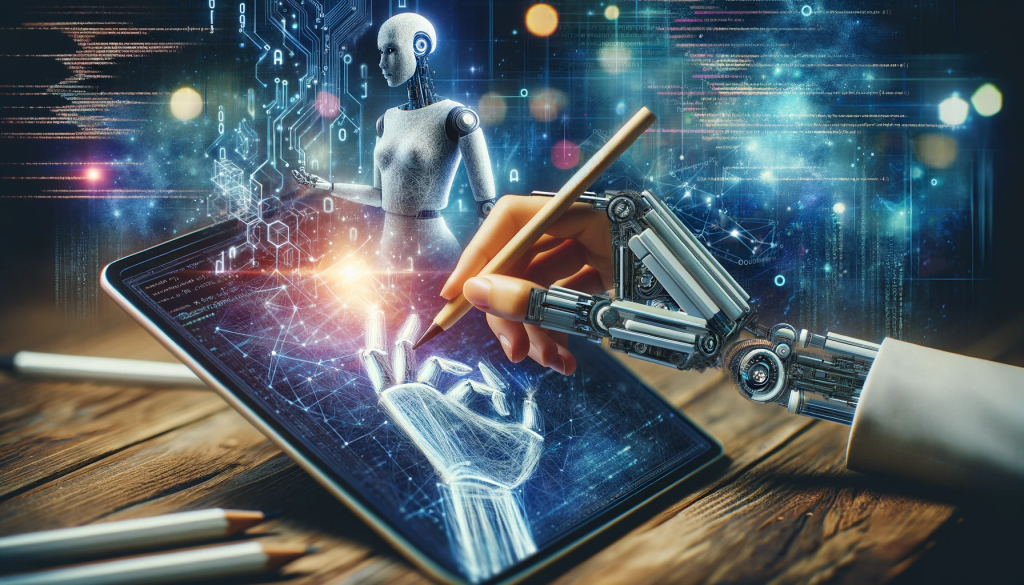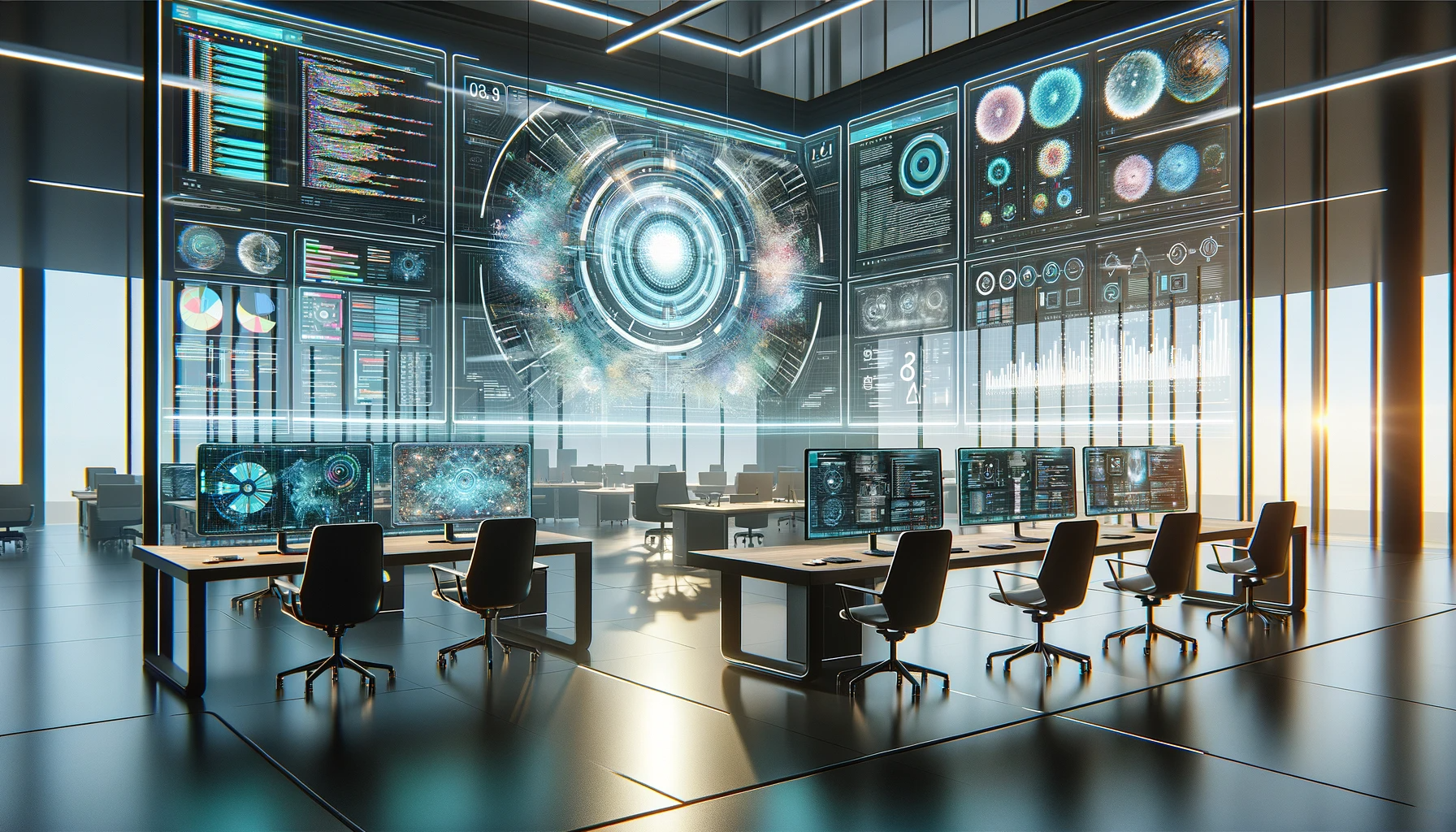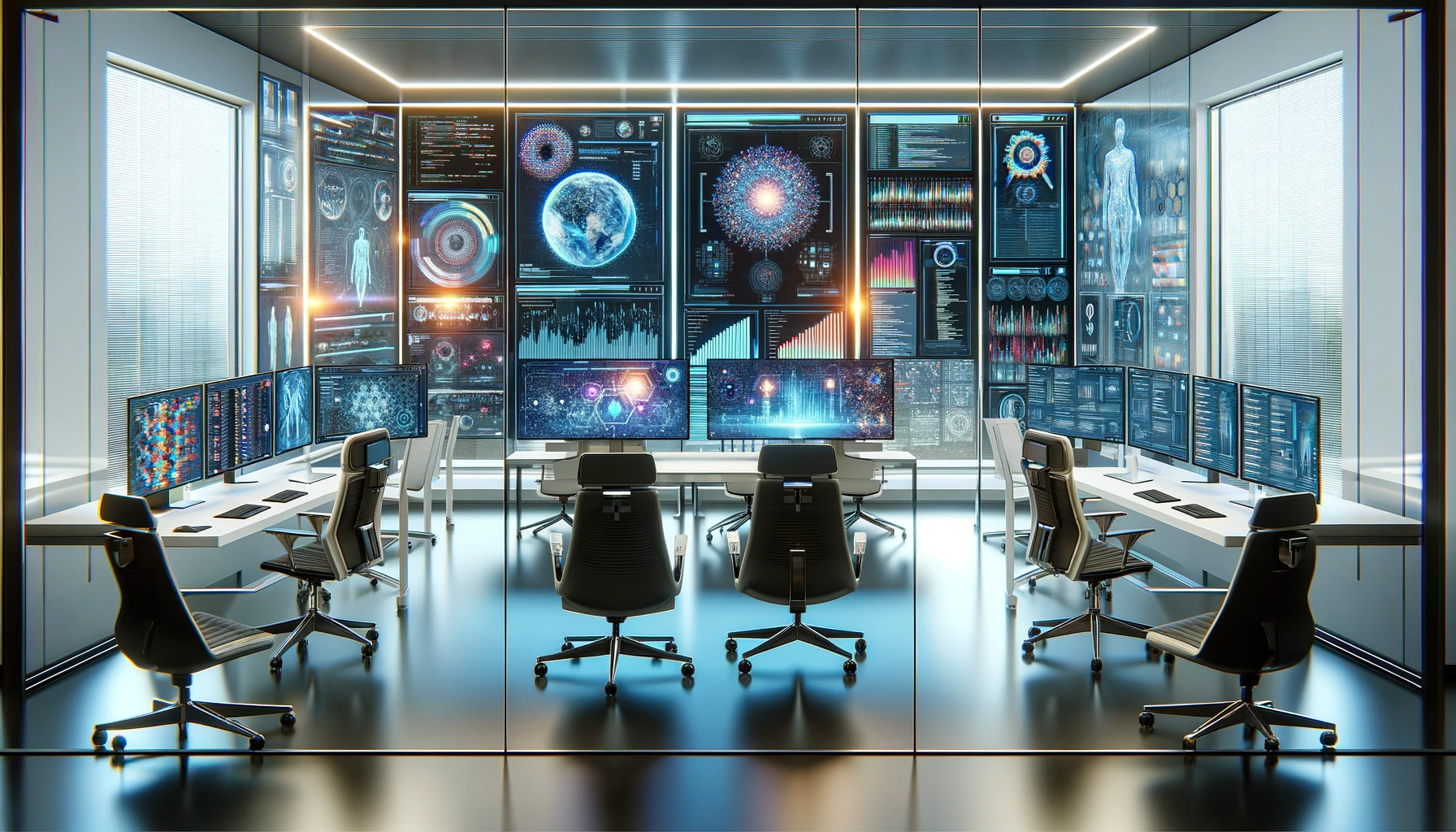Generative AI is transforming the landscape of product development, and its impact is too significant to ignore. Imagine an AI not just analyzing data, but creating, designing, and innovating – that’s the power of generative AI. It’s like giving a painter a brush and watching a masterpiece unfold, except here, the painter is an algorithm, and the canvas is your product.
The journey of generative AI has been an intriguing one. It started with simple algorithms that could mimic patterns and has now evolved into sophisticated systems capable of generating realistic images, text, and even entire virtual environments. This evolution hasn’t just been rapid; it’s been revolutionary. As someone deeply involved in AI development, I’ve seen firsthand how generative AI has moved from a niche concept to a central player in the tech arena.
In this post, I want to take you through the key trends in generative AI that are shaping the future of AI product development. Whether you’re an AI expert, a budding developer, or simply curious about where technology is heading, understanding these trends is crucial. We’ll look at how generative AI is being used, its growing influence in various sectors, and what this means for the future of product development. So, let’s dive into the world of generative AI and see what makes it such a transformative force in today’s tech landscape.
Understanding Generative AI
When we talk about generative AI, we’re essentially discussing a type of AI that’s all about creating something new from existing data. Think of it as a chef who takes basic ingredients and combines them in unique ways to create a dish you’ve never tasted before. In the AI world, these ingredients are data, and the dishes are entirely new content – be it text, images, or even complex designs.
At the heart of generative AI are two key technologies: Generative Adversarial Networks (GANs) and Variational Autoencoders (VAEs). Now, I know these sound like complicated terms, but let’s break them down. GANs are like two artists in a friendly competition. One creates a piece, and the other critiques it. The creator keeps improving until the critic can’t tell if the work is real or artificial. This process helps in generating incredibly realistic outputs. On the other hand, VAEs are more about understanding and compressing data to recreate it in new ways. They’re like a magician who can take a complex trick, figure out how it’s done, and then tweak it to make it their own.
The applications of generative AI are as diverse as they are fascinating. In the art world, it’s creating paintings that can rival the works of great masters. In fashion, it’s designing new clothing styles without a human ever sketching a line. In gaming, generative AI creates whole new levels and characters, offering experiences that are always fresh and exciting. And in healthcare, it’s being used to model complex biological processes, which can lead to breakthroughs in treatment and drug discovery.
In each of these industries, generative AI isn’t just a tool; it’s a collaborator, an innovator. It’s a testament to how AI can augment human creativity and efficiency. From creating stunning visuals to solving complex problems, generative AI is proving to be a game-changer. As we explore further, you’ll see just how much of an impact this technology is having and the endless possibilities it offers. So, stick with me as we delve deeper into the world of generative AI and discover its myriad applications across different sectors.
Emerging Trends in Generative AI
As we continue to explore the world of generative AI, it’s exciting to see how this technology is evolving. There are several key trends that are shaping its future, making it more accessible, realistic, ethical, and integrated.
Trend 1: Increasing Accessibility and User-Friendliness
One of the most encouraging trends in generative AI is how it’s becoming more user-friendly. Remember when using AI felt like you needed a PhD in computer science? Well, those days are changing. Now, there are tools and platforms designed to make generative AI more approachable for developers of all skill levels. This democratization of technology means that more people can experiment, innovate, and create with AI. It’s like giving a box of paints to everyone who has an idea and saying, “Go ahead, paint your masterpiece.”
Trend 2: Enhanced Realism and Precision
The second trend is the leap in realism and precision that generative AI is achieving. Today’s AI models can create images, videos, and text that are so realistic, it’s hard to tell they’re machine-generated. This advancement isn’t just cool; it’s incredibly useful. For instance, architects can use AI to create lifelike models of buildings, or game developers can generate realistic characters and environments. It’s like having a superpower that turns your imagination into reality with incredible detail.
Trend 3: Ethical and Responsible AI
As much as we celebrate the advancements in AI, we can’t ignore the ethical side of things. Generative AI, like any technology, can have biases and can be misused. That’s why there’s a growing focus on ethical and responsible AI. It’s about ensuring that AI treats everyone fairly and doesn’t perpetuate harmful stereotypes. It’s also about being transparent about how AI works and making sure it’s used for the greater good. It’s like having a guardian angel that ensures our AI tools do more good than harm.
Trend 4: Integration with Other AI Technologies
The final trend is how generative AI is joining forces with other AI domains, such as natural language processing (NLP) and computer vision. This integration is opening up new possibilities. Imagine a generative AI that can not only create realistic images but also describe them in natural language, or an AI that can understand a scene in a video and generate new, similar scenes. This convergence is like having a team of superheroes, each with their own powers, working together to achieve incredible feats.
These trends in generative AI are not just shaping the technology; they’re reshaping how we interact with the digital world. They’re making AI more accessible, realistic, ethical, and integrated, paving the way for innovations we’ve only just begun to imagine. As we move forward, these trends will play a crucial role in how generative AI evolves and how it influences our lives and work.
Impact of Generative AI on Product Development
The influence of generative AI on product development is like a breath of fresh air, infusing new life into how we create, design, and innovate. It’s changing the game in ways that are both subtle and profound.
Firstly, let’s talk about the product development lifecycle. Traditionally, this process involved a lot of trial and error, and frankly, it could be slow and costly. But with generative AI, we’re seeing a shift. Now, we can use AI to quickly generate prototypes, test out ideas, and get feedback in real-time. It’s like having a super-efficient assistant who doesn’t need to sleep and can churn out ideas 24/7. This speed and efficiency are not just saving time and money; they’re allowing for a level of creativity and experimentation that was previously unthinkable.
For instance, take the fashion industry. Brands are using generative AI to design new styles and patterns. One exciting case is a fashion line where the designs were created entirely by AI. The AI analyzed current fashion trends and customer preferences to create designs that were not only stylish but also perfectly tailored to the market’s demands. It’s like having a designer who knows exactly what every customer wants.
Then there’s the role of generative AI in customization and personalization. We live in a world where one-size-fits-all is no longer acceptable. People want products that reflect their unique style and needs. Generative AI makes this possible on a whole new scale. From personalized skincare products designed to match an individual’s skin type to custom-fit clothing created with AI-measured dimensions, the possibilities are endless. It’s about giving everyone exactly what they want, even if they haven’t articulated it yet.
In essence, generative AI is not just a tool for product development; it’s a paradigm shift. It’s changing how we think about designing products, responding to customer needs, and pushing the boundaries of innovation. As we continue to harness the power of generative AI, we’re likely to see products that are more creative, more personal, and more attuned to what we, as consumers, really want. It’s an exciting time to be in the field, and I can’t wait to see what we’ll create next.
Future Outlook and Opportunities
As we look towards the future of generative AI in product development, it’s like gazing at a horizon brimming with possibilities. The pace at which this technology is evolving is nothing short of breathtaking, and it’s setting the stage for some truly groundbreaking developments.
One prediction that excites me is the increasing personalization in product design. Imagine a world where products are not just tailored to your preferences, but to your changing needs and moods. Generative AI could make this a reality, creating products that adapt and evolve with you. It’s like having a personal designer who knows you better than you know yourself.
Another area ripe for growth is the integration of generative AI with other emerging technologies like augmented reality (AR) and the Internet of Things (IoT). This could transform how we interact with the world around us, leading to more immersive and intuitive user experiences. Think of smart homes that redesign themselves based on your lifestyle or AR interfaces that change based on your interactions.
As we prepare for this AI-driven future, it’s crucial to stay curious, open-minded, and ready to adapt. For those of us in product development, this means continually learning, experimenting with new tools, and always thinking about the next big thing. It’s an exhilarating time to be in this field, and the opportunities are as limitless as our imagination.
So, as we step into this future, let’s embrace the potential of generative AI with enthusiasm and a sense of responsibility. The road ahead is filled with opportunities to innovate, inspire, and create products that not only meet but exceed the dreams of tomorrow’s world. Let’s embark on this journey with optimism and the readiness to explore the uncharted territories of generative AI.


